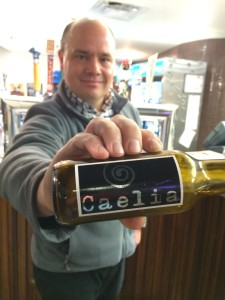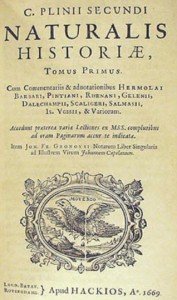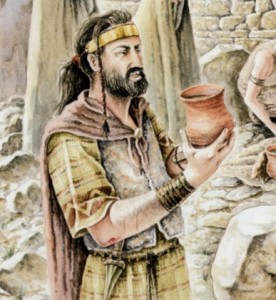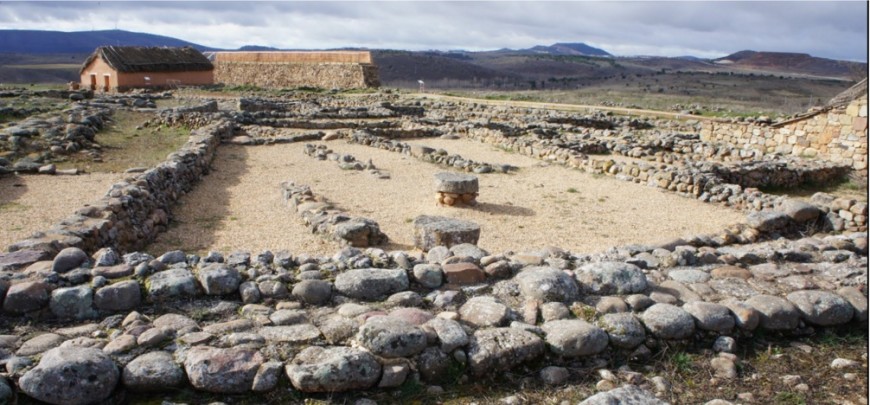While Colorado State University has gained widespread publicity for its fermentation science and technology program — especially the beer-brewing angle — one CSU faculty member from a different department is examining the history of beer in a country known primarily for its wine.

Carlyon holds a contemporary version of Caelia being brewed in Spain.
Jonathan Carlyon, associate professor in the Department of Languages, Literatures and Cultures, was inspired to pursue his new research after reading a 2015 issue of CSU Magazine that featured the university’s fermentation programs and partnerships.
“When I saw the magazine, I asked, ‘What can I add to this?’” he recalls.
The inspiration
Carlyon, whose research specialties include early Hispanic literary culture, recalls when a friend from Spain spent a year in Fort Collins and initially wanted to drink only wine, given its popularity in his homeland. By the end of the year, Carlyon’s friend had been converted to beer, due to the burgeoning brewery scene in Fort Collins and Colorado at large. The friend ended up compiling a scrapbook of beer labels and notes about each brew.
That experience, and Carlyon’s fascination with CSU’s fledgling fermentation science program, made him want to hop into the academics of suds. So he turned to his own research background and began to study an ancient Spanish beer called Caelia that was brewed and consumed extensively before the Romans invaded the Iberian peninsula and instilled wine as the preferred libation.

Roman philosopher Pliny the Elder mentioned the consumption of Caelia in Spain.
The name Caelia, derived from the Latin verb for heating, “calefacere,” was inspired by the heat used in the brewing process. Carlyon has tracked the consumption of Caelia back about 5,000 years, to a time in Spain when women brewed the lightly carbonated drink as part of their daily routine, using a fermentation process similar to the one they used to make bread.
“It was like a beer juice, compared to the beer made today,” he says.
Historical references
There are literary references to beer in everything from the Bible to accounts of the Roman Empire’s difficulty conquering an ancient Spanish city between Madrid and Barcelona called Numancia. Before every battle against the Romans, Carlyon says, the Numancians reportedly got drunk on Caelia, contributing to the Romans’ view of them as fierce, wild fighters who successfully held off the invaders until the Romans wearied of the losses and reverted to building a wall around the fortified city in a siege.
“Finally the Romans stopped fighting, closed them in and starved them, but it took two years,” he says.
After falling to the Romans, the conquerors replaced the Spanish beer culture with one built around wine, and later when Spain began to colonize the Americas, it was grape vines that one explorer listed among the valuable natural resources there in 1550, not barley or hops.
“It was hidden grammar,” Carlyon says. “The fact that he chose that reflected the culture of the time. In 1550, it had been more than 1,000 years since beer had been prevalent.”

Re-envisioning Spain
Carlyon points out that Spain is often viewed in history as the conquering empire, given its treatment of indigenous peoples in the New World.
“But they had their own moment of being conquered, and I find that interesting,” he says. “I’m always trying to show that Spain has a rich and diverse culture. And I make the point that before the Spanish conquered the Aztecs, the Aztecs conquered the Toltecs. For better or worse, this is what humans do.”
Carlyon, who travels to Spain nearly every summer, spent some time on his last trip researching Caelia — and even found some contemporary versions of it bubbling up as microbrewery fever begins to make headway in Spain.
Ultimately, Carlyon says, he’d like to write a paper or even a book about Caelia, and perhaps offer his teachings to CSU’s fermentation students.
“Now beer is worthy of serious academic scholarship,” he says. “We’re always trying to recruit students to take our courses and get our minor. The Languages, Literatures and Cultures lens can be used in almost any field.”
Homegrown Caelia?
He smiles when asked about a prospect he’s clearly already considered: Having a Fort Collins brewery — or CSU’s own fermentation science students — create a small batch of the ancient Spanish concoction. Carlyon, who has never brewed beer, recently met with Jeff Callaway, director of industry outreach for CSU’s fermentation science program, to learn more about how he might contribute to students’ brewing education.
Who knows? Maybe in the future, the university’s young beer-makers will learn not just about contemporary, cutting-edge brewing processes — but how it was done in the good old, old days.
“This is an example of the consequences of taking a second look,” Carlyon says of his newfound research interest. “That’s the thing about diversity and multidisciplinary work, it forces us to take a second look.”
The Department of Languages, Literatures and Cultures is in CSU’s College of Liberal Arts.

The ruins of the ancient Spanish town of Numancia.